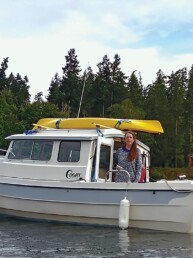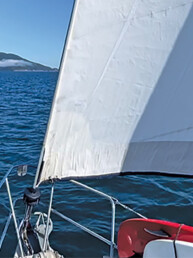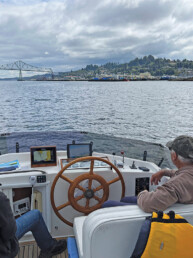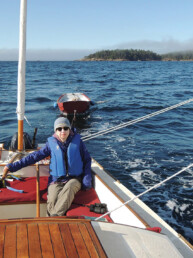This article, by Becca Guillote, originally appeared in the April 2017 Issue of 48° North.
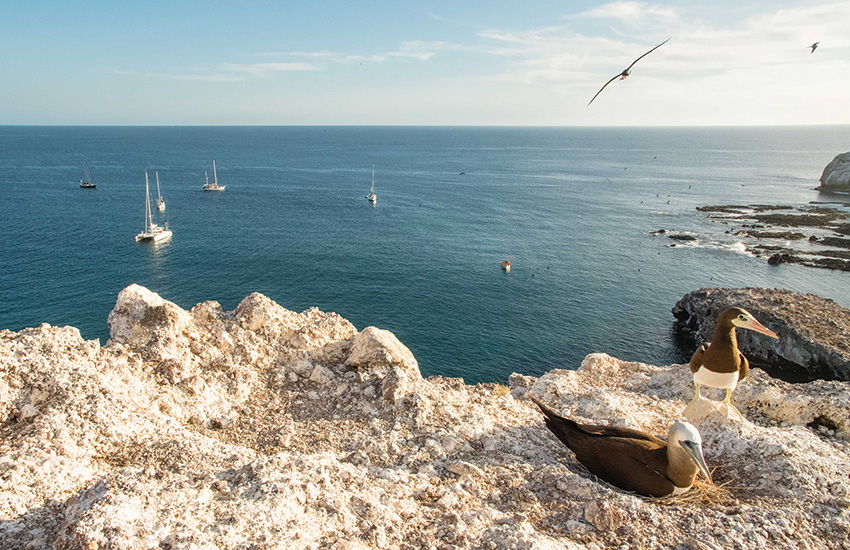
Before we left Seattle, those that had cruised before all agreed it would take us six months before we truly slowed down. Of course, if we asked the same 12 people what type of oil to put in our engine, we would get 15 different answers. But they all agreed on the timeline. Six months before we would stop rushing around, trying to plan out the day, getting anxious about tomorrow. For the first six months, they said, it would feel like a “trip,” something temporary, something novel. And then, one day, at six months, we will wake up on a Tuesday morning in Mexico and realize we have not a single commitment all day, nobody to answer to, and no reason to put on shoes. And then we’ll get it.
Well, they were wrong.
It took five months, two weeks and four days.
We left Mazatlan on a windy evening for the 87-mile passage to Isla Isabel, following our good friends on Agape out of the harbor. Isla Isabel is a must-see stop we had heard about since leaving Seattle. It is an island plopped down in the Sea of Cortez that has been deemed the “Galapagos of Mexico,” complete with rugged landscapes, blue-footed boobies, and nesting frigates. The birds have no immediate history relating humans to panic and destruction, so for the most part they ignore the occasional human intruders. This allows for fantastic viewing and photo opportunities, especially of the boobies flaunting their bright blue feet.
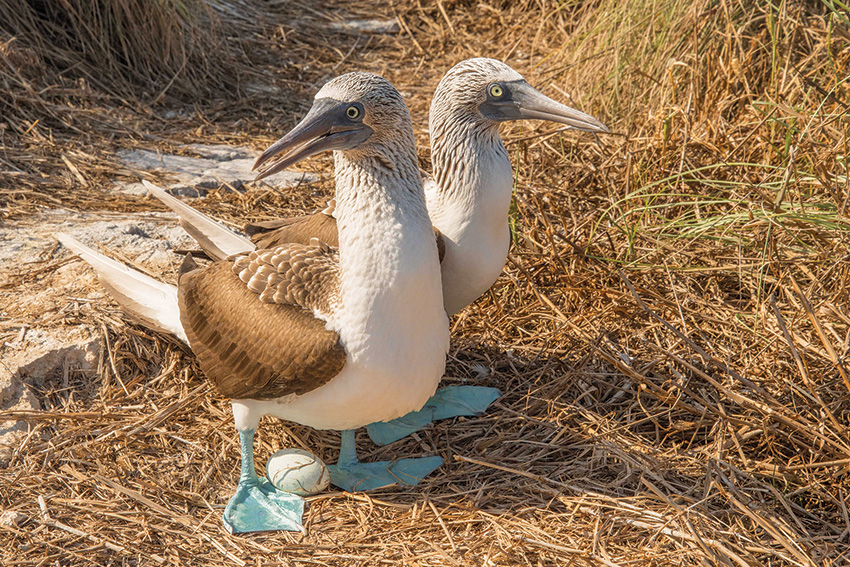
The island came into view as the sun rose after a lumpy and sleepless overnight passage. It was a very welcome sight. The wind blew hard most of the night, and the seas were uneven. We sailed fast under our jib alone, but the irregular seas jolted our stern and prevented anything close to restful naps.
Shortly after daybreak, we maneuvered into the small, unprotected anchorage and settled into the best spot we could, based primarily on our intuition. The charts of this region are generally useless, the books warn of many rocks lurking just beneath the surface, and the swell wraps around both corners to ensure all boats share the discomfort of perpetual movement evenly. Satisfied with our choice, despite the almost certainty our anchor did not set properly on the rocky boulder-strewn bottom, and still wearing the clothes we put on the previous morning, we launched the dinghy and set off.
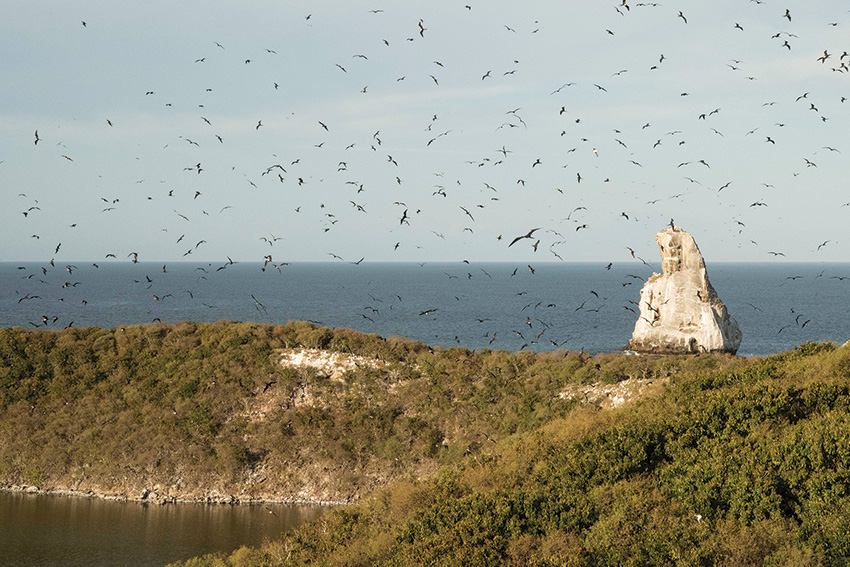
Our first stop was Mango, a boat we knew from Shilshole Bay Marina but had not seen since Seattle. We motored over to say “hello” and ended up lounged in their cockpit chatting for an undefined amount of time (I had no time-telling device with me). From there we headed over to Agape and promptly settled into their cockpit for a further undefined amount of time, though it could certainly be measured in multiples of hours, as at some point we incorporated snacks and beer.
Time has taken on a new shape recently. It is not dictated by watches and alarms, months and dates. It has evolved away from any numbers-based system at all. Instead, it is driven by the approximate distance from sun to horizon, the height of the tide against the rocks and –most often- the signals of hunger sent from belly to brain. If we are invited to an event “on Sunday,” there is no easy way to arrange this information in our timeline. We would need to first find a timepiece to determine today’s name and then count forward to Sunday. Instead, with cruisers, we use measurements like “at sunset” or “after coffee” or “later.”
As we lounged in Agape’s cockpit, we talked about plans and all the things we wanted to see on Isla Isabel, but none of us made a move to execute these plans. We were content to sit, to chat, to stare off at the sea, to do nothing for the majority of the day. It did not feel like laziness, and we felt no guilt. It felt appropriate, it felt like what a day should encompass after an overnight passage. It felt like cruising.
Eventually, as the sun hung low in the sky, announcing the impending darkness, we roused long enough to dinghy ashore and wander up a short trail for a peek at the birds and a beautiful sunset view. Thousands of frigates dotted the sky above us, searching for their evening meal. Lizards, perfectly camouflaged to the ground around them, scurried away moments before inadvertent contact with the bottom of our shoes. Blue- and brown-footed boobies hunkered on nests cradling eggs, and tiny beaked fluffs of white, alert but not intimidated by our presence. In the distance, humpback whales splashed and breached, glad, I presume, to complete their annual 5,000-mile migration from Alaska.

We were gone no more than an hour or two, but it felt like a suitable accomplishment to end the day. I was asleep before the moon appeared and slept soundly, despite the perpetual motion of confused swell against the hull. I set no alarm and had nothing on my mind to worry me.
I thought about the day as I drifted off. In the 12 hours since arriving at Isla Isabel, we had traveled less than half a mile from home (once), but I knew it would be a memorable one. We had spent the time with friends – laughing, relaxing, enjoying – all of us unhurried and content. This day – this feeling – is cruising. We had arrived.
Becca and John have now headed south from the Sea of Cortez. Follow their adventures at halcyonwandring.com
Becca Guillote
Becca Guillote and her husband, John, are young Seattle-based cruisers exploring the world aboard their Valiant 40, Halcyon. After a massive 2019 that included their first Pacific Crossing, they temporarily decommissioned Halcyon in the Marquesas to pursue some short term opportunities to refill the cruising kitty including work on the Arctic Ocean R/V Sikuliaq (www.iceinmotion.com). You can follow their adventures at http://halcyonwandering.com/

